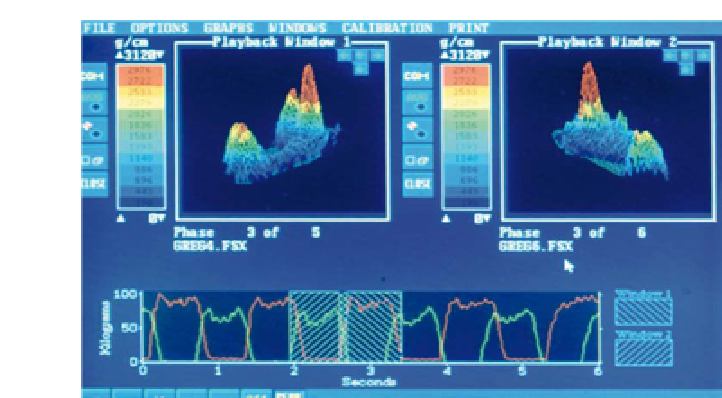what-when-how
In Depth Tutorials and Information
figure 2.3
Foot pressure measurement
Motor neuropathy and muscle wastage combined have a detrimental
effect on gait. Sensory neuropathy alters the patient's perception of their
body positioning, which can also have a detrimental effect on gait. Patients
with impaired proprioception may present with an ataxic (uncoordinated)
gait, postural instability, balance deficits and an increased risk of fall-
related injury (
Van Deursen and Simoneau 1999
). If the tibialis anterior
muscle is affected by motor neuropathy, the patient will walk with rapid,
uncontrolled foot drop during the initial contact phase of gait. The clinician
can hear this as a foot slap as the muscle fails to control dorsiflexion. This
problem reduces the capacity of the foot to absorb shock.
In summary, the diabetic neuropathic foot may demonstrate increased
foot pressures and time loading, and contribute to instability and altera-
tions in gait. These problems can be helped with foot orthoses. As well
as examining the foot for structural problems, a neurological assessment
is imperative in these patients as this will impact on the clinical decision
making in relation to foot orthoses design, footwear and the advice that
is given with these interventions.
Impact of rheumatoid arthritis on foot structure, foot
pressure and gait
Symmetrical small joint polyarthritis is the classic early manifestation
affecting the metatarso-phalangeal and proximal interphalangeal joints in















































